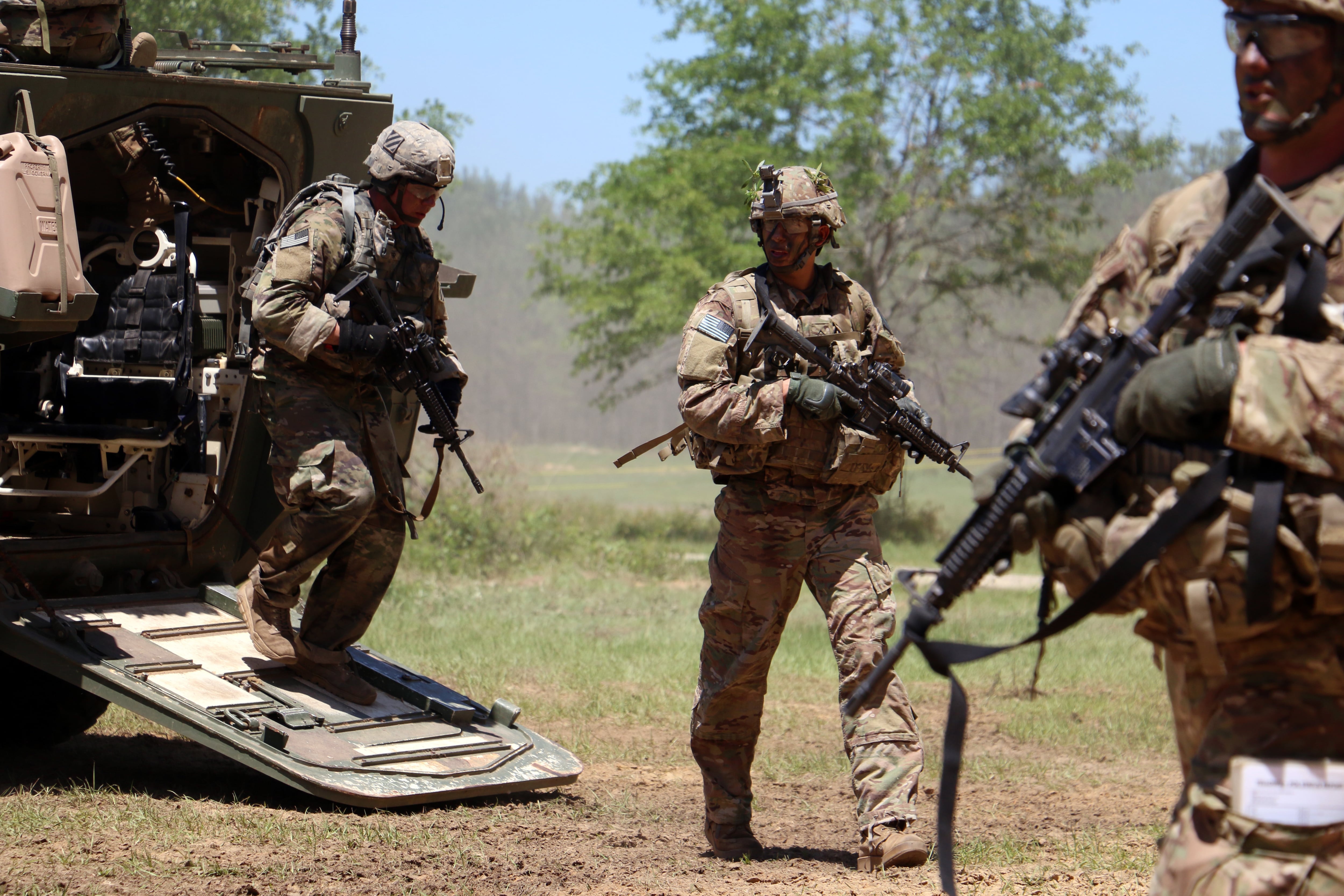Despite COVID-19 challenges, the Army continued to put out extended training for its infantry and armor soldiers this past year. Those pilot programs have now been made permanent.
In fiscal 2020, the Army Infantry School either ran or is running a total of 84 classes, producing 7,320 Infantry One Station Unit Training graduates, said Ben Garrett, Maneuver Center of Excellence chief of public affairs.
RELATED

The pilot training program began in July 2018, extending infantry OSUT from 14 weeks to 22 weeks. Primarily, the program focused on more weapons training, but it also added more physical training, drill and combatives training.
Some of the motivation to amend the program came from a 2017 study of unit leaders that found soldiers arriving at their first assignments physically unfit for duty and undisciplined.
The Armor School was next to adopt the changes, beginning its own pilot OSUT extension in October 2019. Those training changes included extending scout training from 17 to 22 weeks and tanker training from 15 to 22 weeks, said Armor School Brig. Gen. Kevin Admiral, who took command of the post at that time.
They added more training to the gunner skills test, five more days of tactical field training, more live fire time and more time spent on the fundamentals of reconnaissance and security, Admiral told Army Times.
Tankers more than doubled their drive time, from 10 to 15 miles under the old training, to 35 miles of live vehicle driving and 50 miles of driving in a simulator.
“They’re leaving with a learner’s permit,” Admiral said. “Are they experts yet? Absolutely not. But they’re more confident in a tank platoon.”
The Armor School also took some training burden off the units these soldiers are joining. They’re all getting more small arms training, more mounted and dismounted land navigation training as well as combat lifesaver and combative certifications.
Tankers are now training on the M1A2 SEPv2 model of the Army’s main battle tank.
But within the next year, the school’s tankers and mechanics will get their hands on the SEPv3 version, which has modular replacement units, better communications synching between vehicle and handheld radios and can fire advanced multipurpose rounds as well as the M829A4 advanced kinetic energy round.
Under a new force restructuring, the Marine Corps is ditching all of its tanks. Marines formerly trained at the Army’s Armor School. The Army, however, has no plans to get rid of its tanks.
Some new soldiers, who may get a chance to train on that SEPv3, are the more than three dozen Marine Corps reservists who enlisted in the Idaho Army National Guard in September. They were originally Marines assigned to Company C, 4th Tank Battalion, which was deactivated in August.
The Army is in contact with the Marine Corps Combat Development Command as how to support Marines, should they need tanks in future combat, according to Admiral.
Both Marine tankers and tank mechanics have transferred to the Army since the deactivation began.
“That offer will stay open as long as possible,” Admiral said.
Todd South has written about crime, courts, government and the military for multiple publications since 2004 and was named a 2014 Pulitzer finalist for a co-written project on witness intimidation. Todd is a Marine veteran of the Iraq War.





